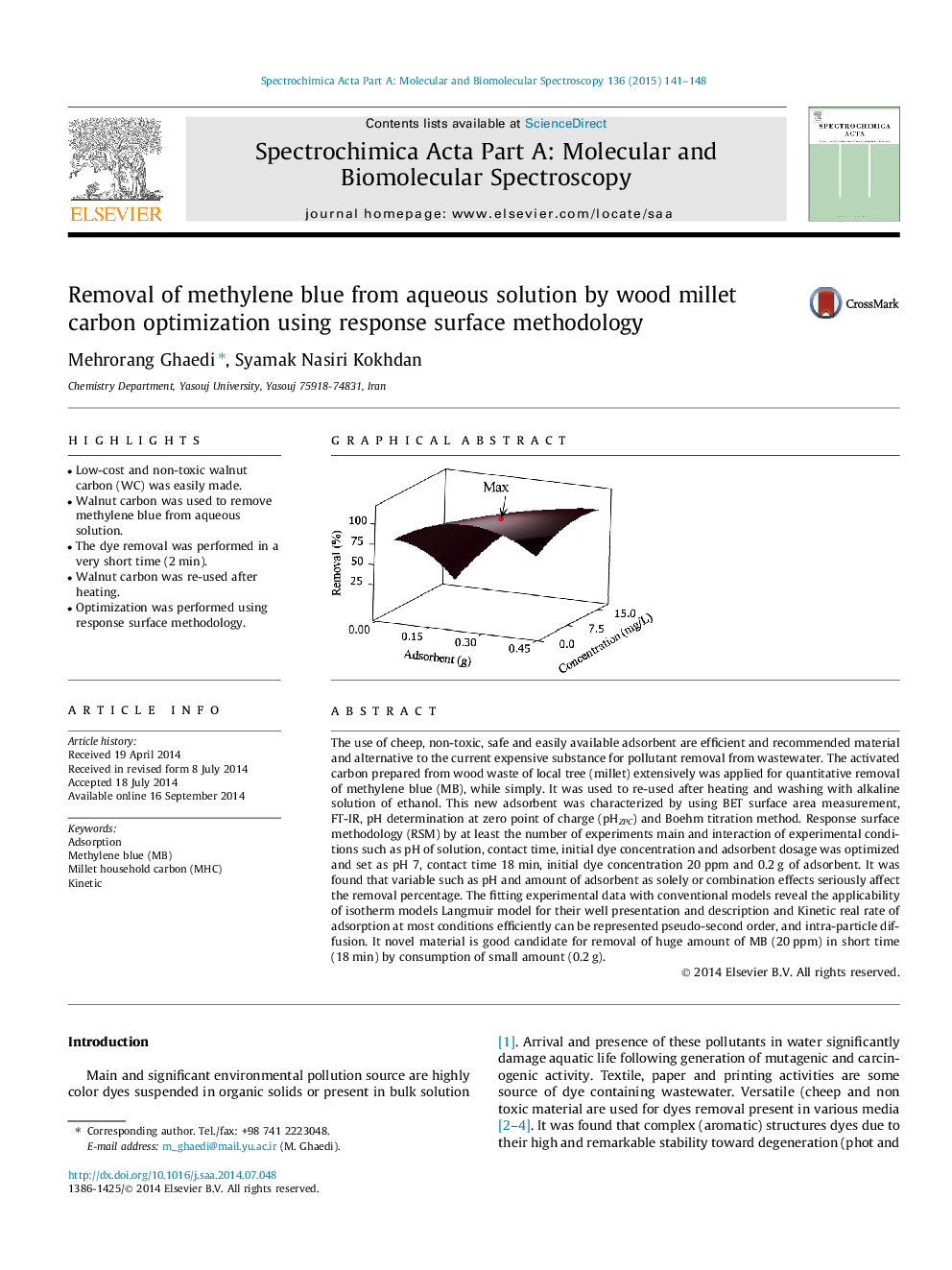| Article ID | Journal | Published Year | Pages | File Type |
|---|---|---|---|---|
| 1229421 | Spectrochimica Acta Part A: Molecular and Biomolecular Spectroscopy | 2015 | 8 Pages |
•Low-cost and non-toxic walnut carbon (WC) was easily made.•Walnut carbon was used to remove methylene blue from aqueous solution.•The dye removal was performed in a very short time (2 min).•Walnut carbon was re-used after heating.•Optimization was performed using response surface methodology.
The use of cheep, non-toxic, safe and easily available adsorbent are efficient and recommended material and alternative to the current expensive substance for pollutant removal from wastewater. The activated carbon prepared from wood waste of local tree (millet) extensively was applied for quantitative removal of methylene blue (MB), while simply. It was used to re-used after heating and washing with alkaline solution of ethanol. This new adsorbent was characterized by using BET surface area measurement, FT-IR, pH determination at zero point of charge (pHZPC) and Boehm titration method. Response surface methodology (RSM) by at least the number of experiments main and interaction of experimental conditions such as pH of solution, contact time, initial dye concentration and adsorbent dosage was optimized and set as pH 7, contact time 18 min, initial dye concentration 20 ppm and 0.2 g of adsorbent. It was found that variable such as pH and amount of adsorbent as solely or combination effects seriously affect the removal percentage. The fitting experimental data with conventional models reveal the applicability of isotherm models Langmuir model for their well presentation and description and Kinetic real rate of adsorption at most conditions efficiently can be represented pseudo-second order, and intra-particle diffusion. It novel material is good candidate for removal of huge amount of MB (20 ppm) in short time (18 min) by consumption of small amount (0.2 g).
Graphical abstractFigure optionsDownload full-size imageDownload as PowerPoint slide
